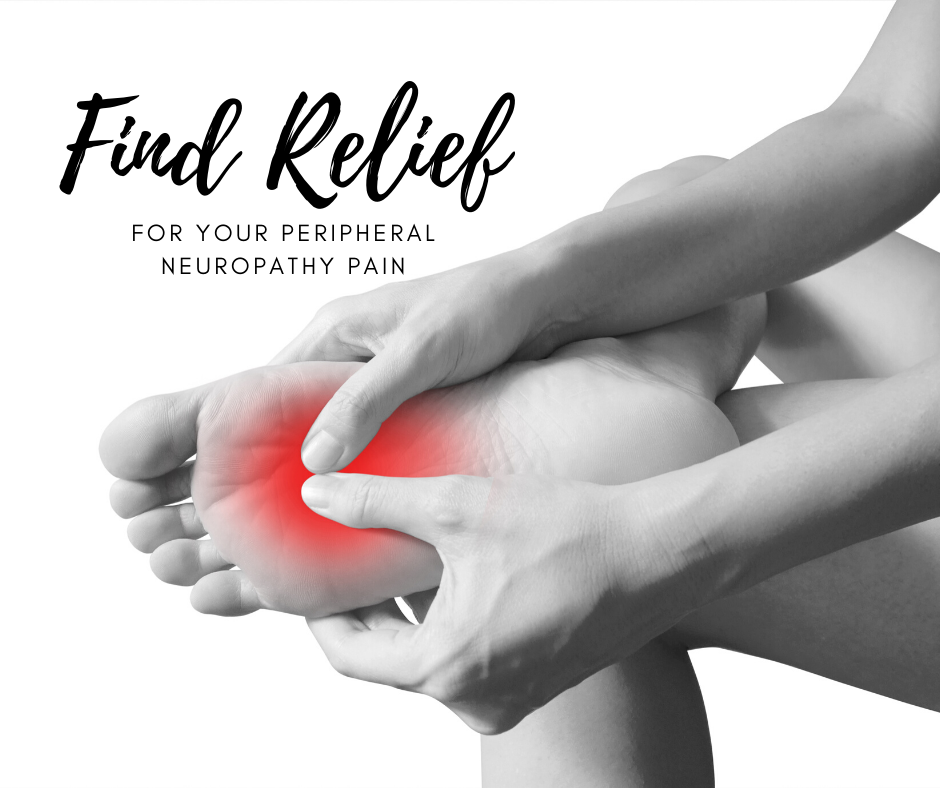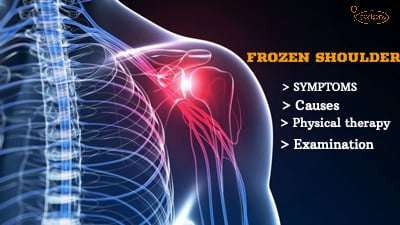Peripheral nerve damage is the result of damage or the death of nerves that are located outside of the brain and spinal cord. This condition currently has no cure and can greatly affect the quality of life of a patient who suffered nerve damage.Researchers estimate that at least 20 million people have peripheral nerve damage, though that figure may be much higher as many patients with symptoms go untested.
Any nerve damage could result in a reduction in sensation, movement, gland or organ function. Patients with peripheral nerve damage often feel the pain of ‘pins and needles’ in their hands and feet. They can feel pain simply laying in bed because their nerves are so damaged. The simple touch of bed sheets can make even existing miserable. These patients often have to deal with these symptoms for life.
Not all nerve damage is painful. Some patients who suffer from peripheral nerve damage will have a dulled sense of feeling. This could lead to dangerous situations where a patient does not realize that they are hurting themselves. For example, a patient could grab a hot pan and burn themselves without even feeling the pain. That is an extreme situation, but it does happen to some patients with severe peripheral nerve damage.
Once nerves become damaged, it is incredibly difficult to try and reverse that damage. Most treatment is focused on management of the condition and not addressing the underlying problem. That is why the research community has been looking for other ways to treat this condition. Before we discuss stem cell therapy it may be helpful to better understand peripheral nerves and their role in the overall nervous system.
Peripheral Nervous System
There are two main components of the nervous system: the peripheral nervous system and the central nervous system. The central nervous system is more or less the spine and the brain. These two components send the signals and instructions that various body parts and organs will follow. The peripheral nervous system encompasses all of the nerves that are outside of the spine and brain.
What Does The Peripheral Nervous System Do?
The main purpose of the peripheral nervous system is to connect the rest of the body to the central nervous system. Without this system, the brain and spinal cord could not communicate with the rest of the body. This would likely result in the death of a patient and highlights how important this system is.
The peripheral nervous system can then be broken down into the somatic nervous system and the autonomic nervous system. The somatic nervous system is the voluntary control that patients have. Movements such as walking, reaching for a pen, and stretching, are all voluntary actions that are part of the somatic nervous system. The autonomic nervous system is in control of the self-regulating bodily functions, such as heart rate and digestion.
There are three types of nerves in the peripheral nervous system:
- Sensory nerves. This type of nerves allow you to feel and they connect to your skin.
- Motor nerves. These nerves allow you to move, as they are connected to your muscles.
- Autonomic nerves. These are the nerves that keep your heart pumping. They are connected to all of your internal organs.
The nerves in the peripheral nervous system are not protected by the spinal cord or brain, which leaves them more vulnerable to damage. Understandably, when these nerves become damaged it can lead to long-term issues for patients.
Peripheral Nerve Damage
Peripheral nerve damage is also known as peripheral neuropathy. When nerves become damaged they will transmit a weaker signal or stop transmitting a signal to the rest of the nervous system. This can result in a number of symptoms, such as:
- Loss of feeling
- Loss of muscle control
- Paralysis
- Extreme sensitivity to touch
- Lack of coordination
Symptoms can vary widely from patient to patient, depending on a number of factors. There are more than 100 types of peripheral nerve damage. With each one of them having its own set of unique symptoms and characteristics. Peripheral nerve damage can cause a number of long-term effects.
Long-Term Effects
Many patients will not have severe symptoms from peripheral neuropathy. These patients can go on living their day-to-day lives with little effect on their quality of life. However, there are plenty of patients that have more severe peripheral nerve damage. These patients will suffer from more complications compared to patients with mild cases.
How Can Nerves Become Damage?
There are many ways that nerves can become damaged. The leading cause of peripheral nerve damage is diabetes. Patients with diabetes can have high blood sugar, if the disease is not properly managed. Researchers are not entirely sure why high blood sugar damages nerves. High blood sugar also weakens the walls of small blood vessels, which supply nerves with oxygen and nutrients.
If the nerves are not receiving adequate oxygen and nutrients, then it would explain why damage occurs to the nerves over a long period of time. Researchers also recently found that cellular factors derived from the bone marrow also play a part in the development of peripheral neuropathy in diabetic patients. Regardless of the exact mechanism of the disease development, there are plenty of other conditions that lead to peripheral nerve damage.
Here are just a few other ways peripheral nerves can become damaged:
- Excessive alcohol consumption
- Traumatic injuries
- Some medications, such as blood pressure medication
- Autoimmune disorders
- Bacterial infections and viruses
Autoimmune disorders, infections, and viruses generally cause nerve damage as pathogens or antibodies can attack various nerves throughout the body. Alcohol can damage nerves over a long period of time. Traumatic injuries can completely destroy a number of nerve endings at once. Whatever way a patient’s nerves become damaged, it is important that these patients seek medical treatment.
Current Treatment Options
The medical community has not been able to develop comprehensive treatment options for patients with peripheral nerve damage. There are a few treatment options for patients who are looking to manage the condition.
Medication
If a patient is experiencing a great deal of pain from their nerve damage, medical professionals will likely prescribe medication. Pain medications can help relieve patient pain in the short term. Other medications, such as narcotics, antiepileptic medicines, and antidepressants may help symptoms in some patients. These medications interfere with how nerves function in the body to prevent them from properly sending their signals.
Physical and Occupational Therapy
Physical therapy can help patients strengthen the nerves and improve their ability to transmit their signals. If a patient has muscle weakness, physical therapy can improve muscle strength and ensure that patients can continue to use those muscles. Occupational therapy can be useful for patients who have lost some skills due to the condition. A good occupational therapist can develop a treatment plan that will help a patient learn new skills to cope with the condition.
Transcutaneous Electronic Nerve Stimulation
This treatment method is not widely used by patients with peripheral nerve damage, as it does not work effectively in all patients. In this treatment, electrodes are placed on the affected skin area and electricity is passed through into the nerves. The hope for this treatment is that the nerve signals will be disrupted and prevent them from sending signals to the brain.
None of these treatment options address the underlying pathology of peripheral nerve damage. The research community has been unable to reverse nerve damage in patients. Stem cell therapy is looking to change all of that.
Stem Cell Therapy For Peripheral Nerve Damage
Stem cells have been interesting to researchers as a way to develop new therapeutics for a number of diseases and conditions. Once a controversial topic, stem cell research has been receiving billions of dollars in order to unlock the potential of these incredible cells. Stem cells have a number of incredible properties that make them ideal for treating various conditions and diseases.
Stem cells can differentiate into nearly any cell in the body. Whether that cell is a heart muscle or a nerve cell, stem cells can create new cells when old cells die or are damaged. This could potentially mean that stem cells could replace dead or damaged nerve cells throughout the body.
Stem cells secrete a number of regenerative growth factors including: brain-derived neurotrophic factor, fibroblast growth factor, nerve growth factor, insulin-like growth factor and hepatocyte growth factor. These factors encourage the body to repair itself and create new cells to replace damaged cells.
If a patient is suffering from nerve damage from an autoimmune disorder, stem cells may be able to help. Stem cells have the ability to regulate the immune system and prevent the body from attacking itself. This immunoregulatory effect could reduce the immune system’s response and allow the body to repair the damaged nerve cells.
Stem cells are not just promising in theory, there are some promising studies that point to the fact that stem cells may be able to help patients with peripheral nerve damage.
The Research Is Promising
Researchers at McGowan Institute for Regenerative Medicine were able to repair nerve damage and restore the function of a sciatic nerve in an animal model. Mice with damaged sciatic nerves were injected with stem cells at the site of the damaged nerve. The stem cells were able to create non-neuronal support cells in order to repair the damaged sciatic nerve.
The group of mice that received stem cell injections had fully functioning sciatic nerves just six weeks after receiving the treatment. By twelve weeks, the mice returned to normal movement patterns. The mice that had received the stem cells were able to completely regrow the leg muscle mass that was lost during the study.
Another study that was published in 2015 showcased the potential power of stem cells to treat peripheral neuropathy. Researchers used autologous stem cells to attempt to treat patients that had developed foot gangrene due to peripheral neuropathy. The results were extremely promising. Patient symptoms improved, pain decreased, and cold sensation was reduced as well. Overall, patient quality of life improved as a result of the treatment.
BioXcellerator is attempting to take what researchers have learned in the lab and turn it into real results for patients with peripheral nerve damage.
BioXcellerator Works With Patients With Nerve Damage
At the BioXcellerator clinic in Medellin, Colombia, our medical team has worked with patients that are suffering from peripheral nerve damage. Many of these patients are disappointed with the treatment options that conventional medicine has offered them. The BioXcellerator team is more than happy to help these patients and
We work directly with patients to develop a comprehensive, customized treatment plan that works specifically for their unique case. Whether that treatment plan involves physical therapy, surgery, stem cell treatment, platelet-rich plasma, or another treatment, we are focused on providing patients with the best possible care. Our team will never recommend a therapeutic option that will not work for their case. If that entails recommending a patient to another specialist, our team is more than happy to do so.
BioXcellerator is always working on developing and researching new treatments and therapies that could improve our patient’s health. We have recently developed a new form of stem cells we like to call ‘golden cells.’
Golden Cells
Stem cell treatments can often be inconsistent depending on which stem cell clinic you receive treatment at. Many stem cell clinics do not have quality control measures in place to ensure that all stem cells a patient receives are of the highest quality. The team at BioXcellerator understood this problem and set out to change all of that. Our team developed a comprehensive stem cell qualification process that would ensure our patients receive the highest quality stem cells.
We scan for all diseases and deformities to ensure that the stem cells have no issues and we set strict potency benchmarks that all stem cells have to reach. If a batch of stem cells does not meet these standards, then they will not be used in a BioXcellerator treatment. We call these stem cells ‘golden cells,’ as they represent the 1% of stem cells. Our team believes that these golden cells will be able to treat patients more effectively than typical stem cell treatments.
Reach out to your healthcare professional to learn more about potential treatment options for your peripheral nerve damage. There are more options than just conventional peripheral nerve damage treatments. Stem cell therapy could improve your quality of life and repair some of the nerve damage that you are currently suffering from.


